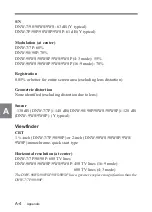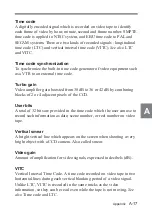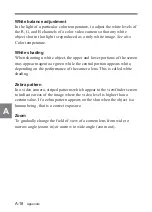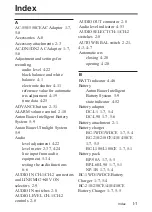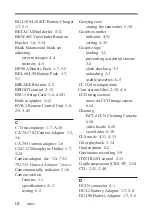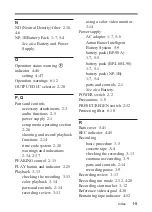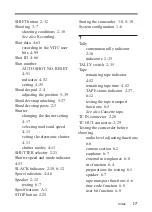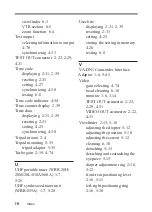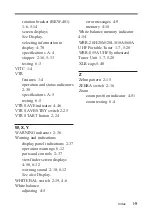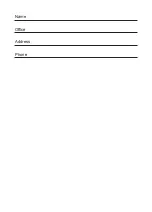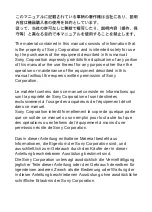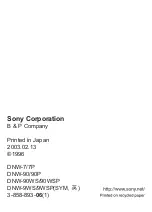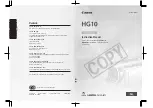
Appendix
A-17
A
Time code
A digitally encoded signal which is recorded on video tape to identify
each frame of video by hour, minute, second and frame number. SMPTE
time code is applied to NTSC system, and EBU time code to PAL and
SECAM systems. There are two kinds of recorded signals : longitudinal
time code (LTC) and vertical interval time code (VITC). See also LTC
and VITC.
Time code synchronization
To synchronize the built-in time code generator of video equipment such
as a VTR to an external time code.
Turbo gain
Video amplifier gain boosted from 30 dB to 36 or 42 dB by combining
blocks of 2 or 4 adjacent pixels of the CCD.
User bits
A total of 32 bits are provided in the time code which the user can use to
record such information as date, scene number, or reel number on video
tape.
Vertical smear
A bright vertical line which appears on the screen when shooting a very
bright object with a CCD camera. Also called smear.
Video gain
Amount of amplification for video signals, expressed in decibels (dB).
VITC
Vertical Interval Time Code. A time code recorded on video tape in two
horizontal lines during each vertical blanking period of a video signal.
Unlike LTC, VITC is recorded in the same tracks as the video
information, so they can be read even while the tape is not moving. See
also Time code and LTC.


